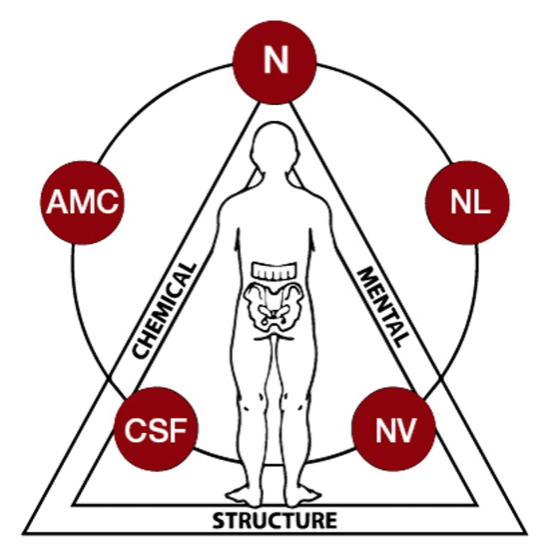Applied Kinesiology
Applied Kinesiology (AK) is a diagnostic system that utilizes manual muscle testing as a functional, neurologic evaluation tool to assess the Structural, Chemical and Mental aspects of one’s health (triad of health).
About Applied Kinesiology
Applied Kinesiology (AK) is a diagnostic system that utilizes manual muscle testing as a functional, neurologic evaluation tool to assess the Structural, Chemical and Mental aspects of one’s health (triad of health). Dr. George Goodheart was the founder of Applied Kinesiology in 1964 and he was the first chiropractor to be on 1980 Olympic Medical Team.
Applied Kinesiology embraces all modalities of healing including Chiropractic, Osteopathy, Medicine, Dentistry, Acupuncture, Biochemistry, Psychology, Homeopathy, Naturopathy, etc. Applied Kinesiology is the only healing modality I know of that asks the question, WHY? Why does my shoulder hurt? Why do I have chronic migraines? Why do I have lower back pain?

Dr. Goodheart once said “anything can cause anything.” More often than not your pain or symptoms may be the result of something completely separate from the area of your body experiencing the discomfort. For example, pain in your hip could simply be coming from a muscle not firing properly. Treatment methods can restore the neural pathway between the brain and muscle, resolving the pain. In another person this same pain could be stemming from a food sensitivity or environmental irritant the person is continuously being exposed to, causing inflammation in the body and leading to pain or injury. This whole person, individualized approach gets to the root cause of your symptoms. Ten different people may present with lower back pain requiring ten completely different treatments due to the root cause of their symptoms.
Treatments may include specific chiropractic adjustments, myofascial therapies, cranial techniques, meridian and acupuncture skills, clinical nutrition, dietary management, supplementation recommendations, laboratory evaluation, exercise and rehabilitation instruction, emotional techniques, evaluation of environmental irritants, muscle strengthening techniques and reflex procedures, lifestyle recommendations and more.
